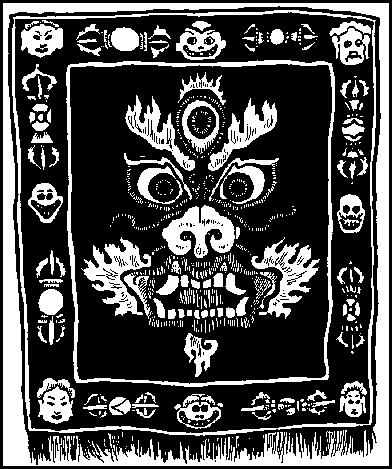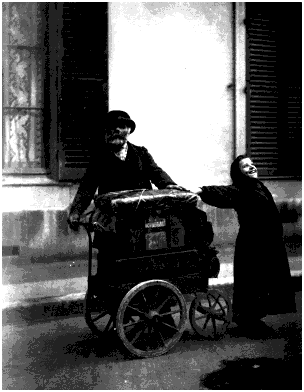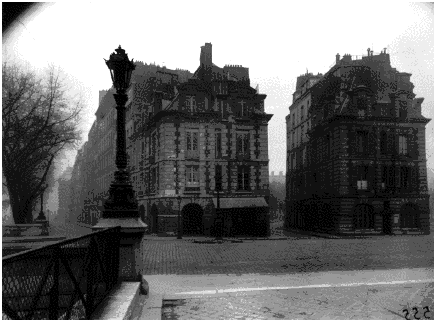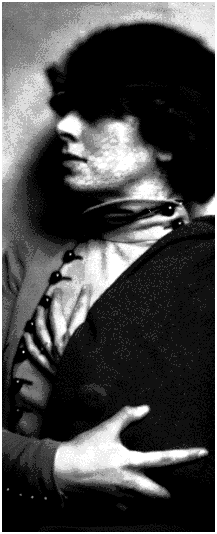Anita Desai
(Mariner)

- The man looked as old to her as Papa, nearly, and was grossly overweight too, while his face was pockmarked. None of this disturbed her as much, however, as did his sullen expression. He so resembled all the other men who had ever looked her way --- they had all been reduced to precisely this sort of unenthusiasm...
Uma is a strange, somewhat unloveable character --- totally in thrall to her mother and father (she calls them "MamaPapa" or "PapaMama" ("It was hard to believe they had ever had separate existences...") She is given to seizures, where she falls to the ground, thrashes around, and turns purple. She waits on them, is expected to have no life of her own after the disappearance of her two husbands. Her one act of rebellion occurs when the family goes to the river for the ritual bath, Uma plunges into the water, "as if this were what she had been preparing to do all her life." She can't swim, almost drowns, is hauled back to shore, and thinks,
What it was was that when she had plunged into the dark water and let it close quickly and tightly over her, the flow of the river, the current, drew her along, clasping her and dragging her with it. It was not fear she felt, or danger. Or rather, these were only what edged something much darker, wilder, more thrilling, a kind of exultation --- it was exactly what she had always wanted, she realized. Then they saved her. The saving was what made her shudder and cry, there on the sandbar, soaking wet, while the morning sun leapt up in the hazy, sand-colored sky and struck the boat, the brass pots that the women held, and their white drifting garments in the water.
I can think of no other recent novel that gives one such a strong feel for the taste and smell of India --- the closed bourgeois life, the entrapment of women, the semi-feudal state where their days and marriages and roles are all carefully blocked out for them. Uma is probably slightly retarded; she certainly has little to interest her outside of her collection of old Christmas Cards, an holy and slightly dotty aunt, and her one book, of Ella Wheeler Wilcox --- whose poems she reads over and over again:
You are wasting your life in that dull, dark room
(As he fondled her silken folds);
O'er the casement lean but a little, my queen,
And see what the great world holds...
But suddenly, two-thirds of the way through Fasting, Feasting, we are transported to New England, to be with Uma's brother, Arun. He has received a scholarship to college, and lives with an American family, the Pattons: gruff father, slightly dotty, in- But, by now, we have come to trust this most ingenious author. What we find is that the Patton family, in their consumerist suburban home, are little different from the family that Arun has left behind in India. At one point, he comes upon Melanie, in the kitchen, devouring, alone, a tub of ice cream, "with renewed ferocity" --- ice cream she will immediately throw up in the bathroom. It's a moment of truth for Arun. He sees "something he knows:" a resemblance to the contorted face of an enraged sister who, failing to express her outrage against neglect, against misunderstanding, against inattention to her unique and singular being and its hungers, merely spits and froths in ineffectual protest. How strange to encounter it here, Arun thinks, where so much is given, where there is both license and plenty. For 150 pages, Ms. Desai captures for us, thorough none but the simplest language, the tight, controlled world of an Indian middle class family. Then, for a final 75 pages, she captures the tight, controlled world of an American middle class family. She limns these two disparate worlds with such skill and insight (and, too, with such compassion), that one cannot help but be moved, both by the artistry, and by the despair.
John Szarkowski
(Callaway)

"Clôture blanche," in which case we might have noted that it was made six or seven years after the great Paul Strand picture White Fence, which Atget surely never saw.
Or, of the photograph Luxembourg: It would be inadmissible to say that this picture is about life and death, or gain and loss, but one might possibly say that it is about evanescence.
Or:
It is surprising to remember that when Versailles was new photography had not been invented, and it is tempting to wonder if André le Nôtre, the designer of the gardens of Versailles, knew what they really looked like.
As my friend Billy Joe of Texas would comment: "Say who?"
No matter. Szarkowski is obviously one of those guys who likes talking to his sweetie, loudly, in the middle of movies. The photographs float nicely above the text, as they should, and their composition, and, above all, their feel of the life of Paris and the countryside from seventy-

Djuna Barnes
(Modern Library)

- Be as the Frenchman, who puts a sou in the poorbox at night that he may have a penny to spend in the morning --- he can trace himself back by his sediment, vegetable and animal, and so find himself in the odour of wine in its two travels, in and out, packed down beneath an air that has not changed its position during that strategy.
Or,
The America, what then? He separates the two for fear of indignities, so that the mystery is cut in every cord; the design wildcats down the charter mortalis, and you get crime. The startled bell in the stomach begins to toll, the hair moves and drags upward, and you go far away backward by the crown, your conscience belly out and shaking.
We learn from the descriptive notes up front that we are dealing with a book on lesbian love (Robin, Nora, and Jenny), and that although it was frank for its time, it was not pilloried in the same way as The Well of Loneliness. I'm guessing that Barnes was not abused for her frankness because no one could figure out what she was muttering on about. At its best, she writes like deSade (in style, not in content) on an off day. At its worst, it reeks of the lumpy noodling of gothic novels like Melmoth the Wanderer and The Mysteries of Udolpho.
We imagine a graduate student in English at Tulsa State will soon enough be writing a thesis on "The Parallel Uses of Carter Mortalis as Symbology in Nightwood," or "The Humble sou as an Attribute of Dissonance in the works of Djuna Barnes." For the rest of us, our only prayer is that the recrudescence of interest in this occlusive author will not be seen as A Brave New Wave for imitators in what's left of American Literature.